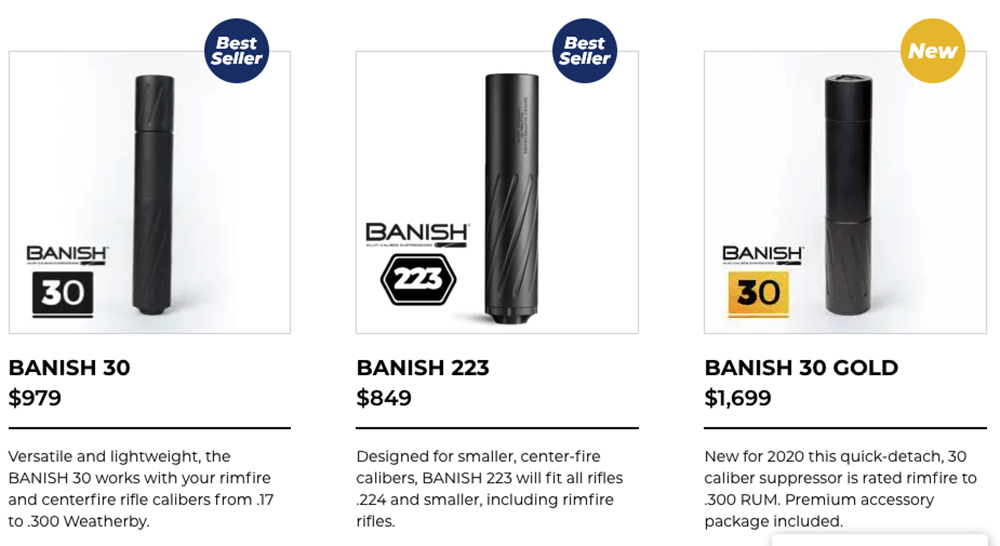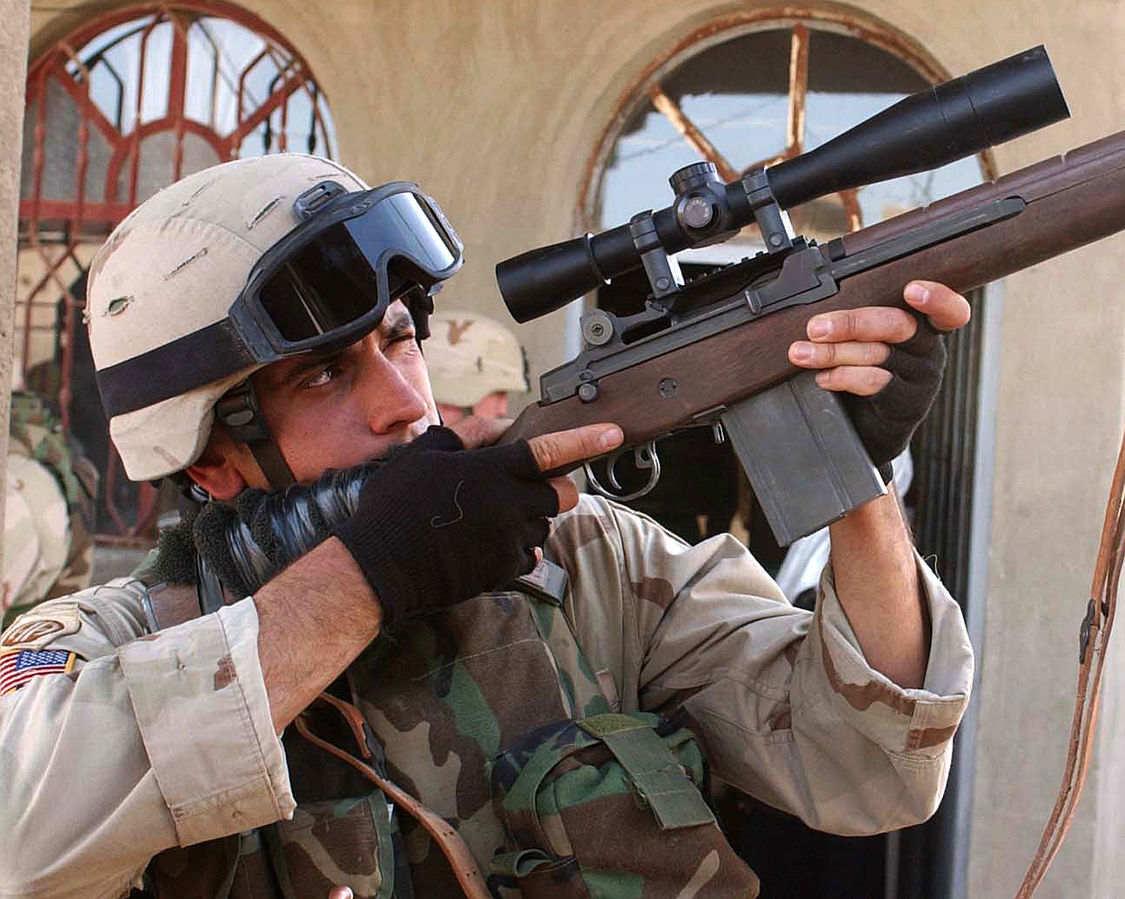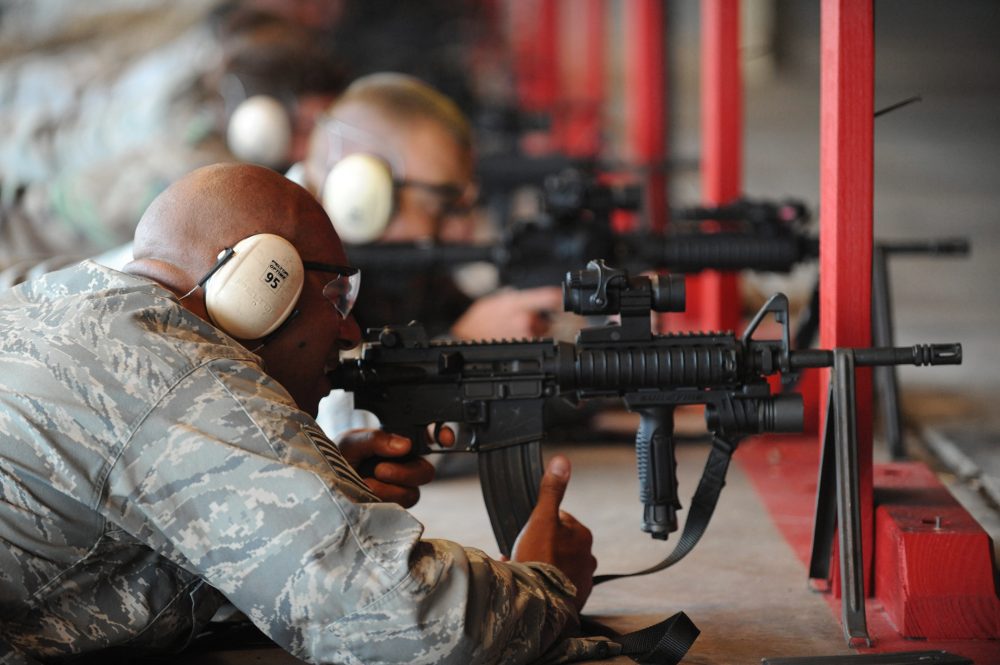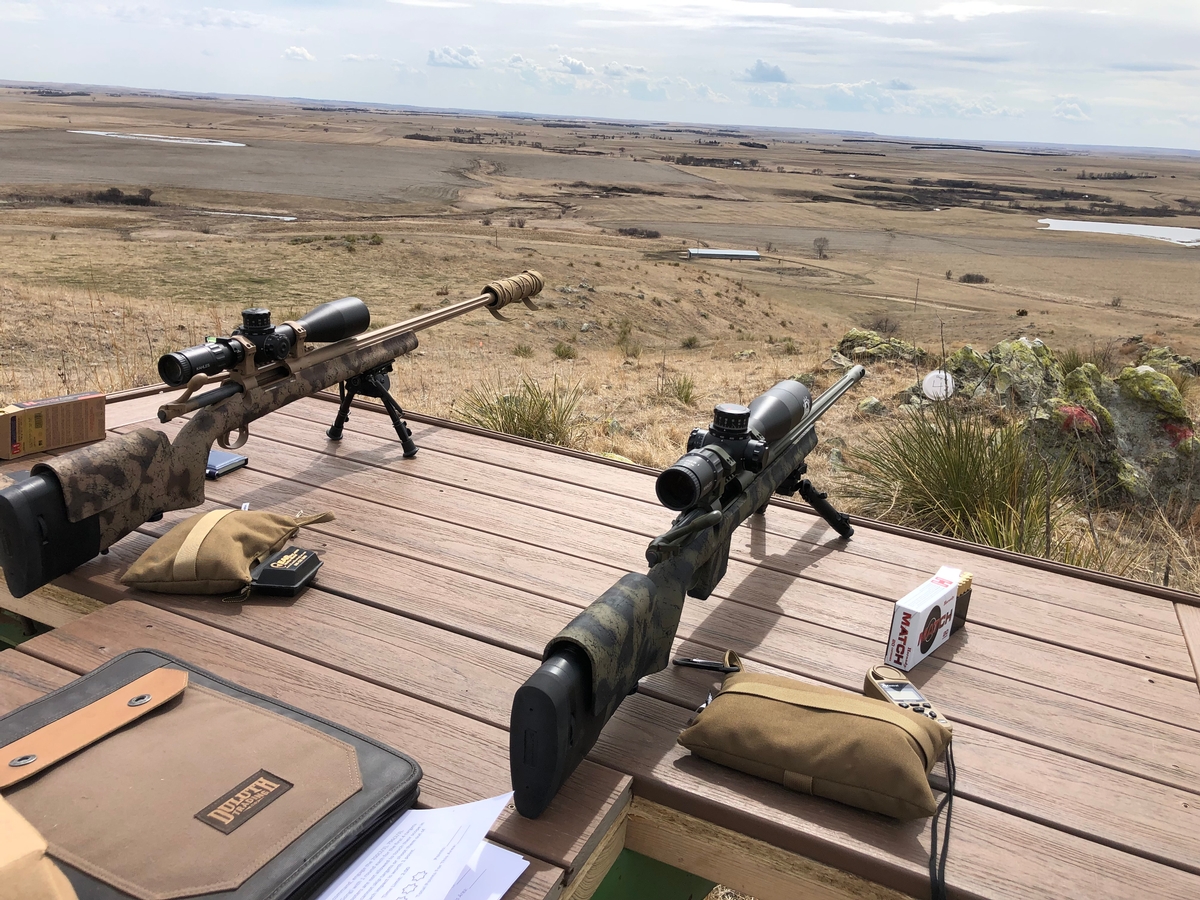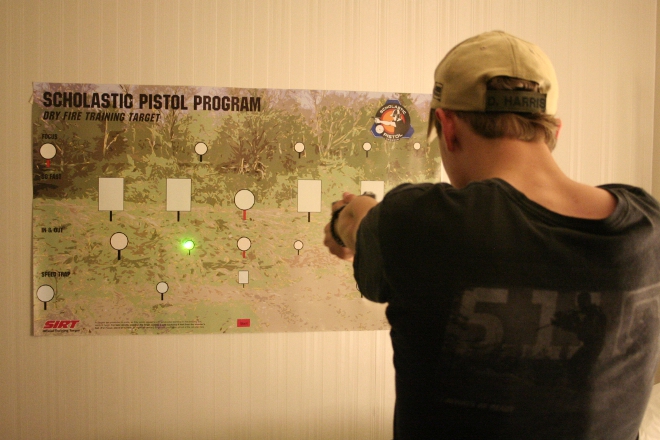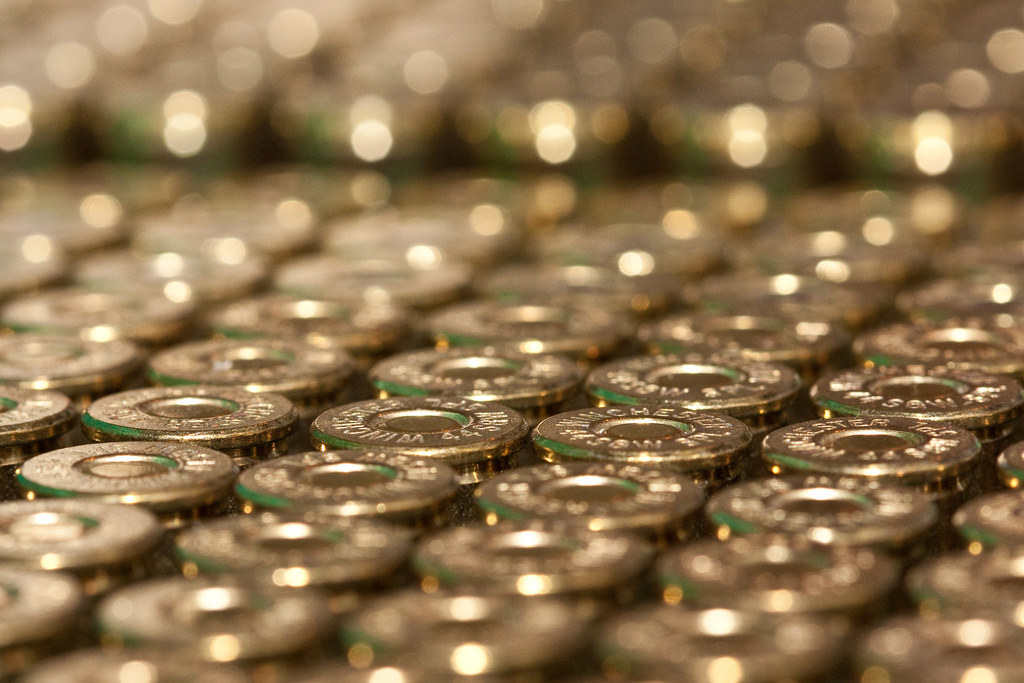If you’ve been shooting for very long, or have been chasing those long range targets, you’ve probably thought about reloading.
Between the ammo savings of over 50% and the increased accuracy, it’s a wonder every shooter doesn’t roll their own and skip buying factory ammo altogether!
But of course, reloading your own ammo is a difficult, and often arcane process that only a select few have the time and energy for… right?
Wrong.
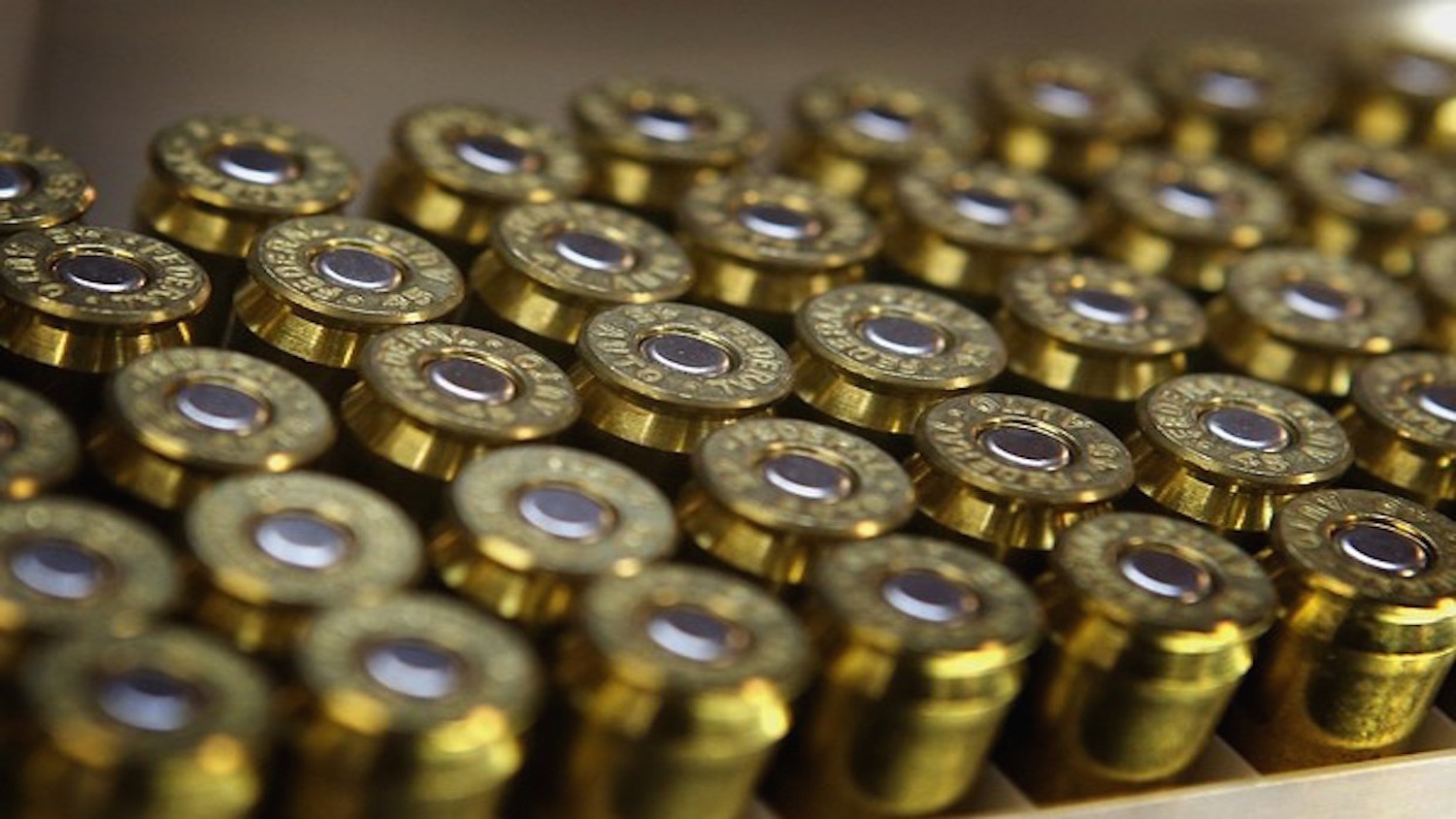
Reloading your own ammo is actually fairly simple once you understand the steps, and have the equipment set up. If you’ve ever thought about reloading, want to learn more about the process, or are just trying to figure out what all you need to get started, we encourage you to read on and find out.
Today, we’re diving into reloading, from the process to the equipment to the hazards and pitfalls to avoid. Let’s get to it.
Note: Legally this information is purely educational. We are not responsible for any injuries, deaths, property damage, or other misadventures. You’re dealing with explosives here, and you understand that you are liable for anything that comes of that.
Why Bother Reloading in the First Place?
Some might wonder why reloading matters, or what the point is in the first place? Well if you’re curious, or just need to convince a skeptical spouse to let you take up half the garage with your reloading gear, here are some things to consider.
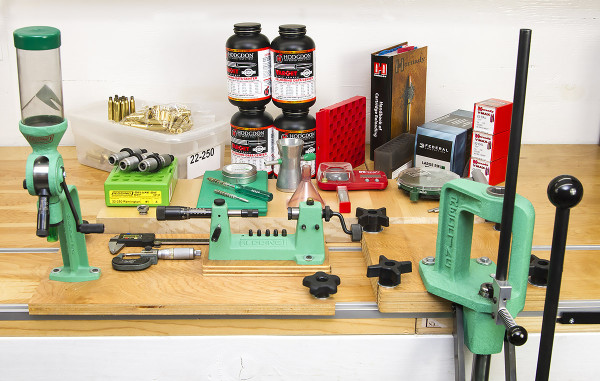
Your Rounds are More Accurate, and Customizable
When you reload, if you want to put in the extra effort, you can have a custom round not only for your specific needs but for your specific gun, or even your specific barrel.
How does that work?
When a round is fired, differences in the forging, machining, and even atomic structure of the barrel influence how much the barrel flexes, and where. Think of your barrel like one of those spring doorstops. When you flick it, it oscillates back and forth or up and down, very rapidly (and makes that sproinnnngggg noise that your kids find fascinating).
That shockwave of motion is similar to what you get in the barrel of a firearm following a shot. The pressure and force of a bullet impacting the lands and grooves of the barrels rifling (the peaks and troughs of the spiraling inside your barrel that gives the bullet its accuracy and spin) and then traveling through the barrel, causes a very similar oscillation in the barrel.
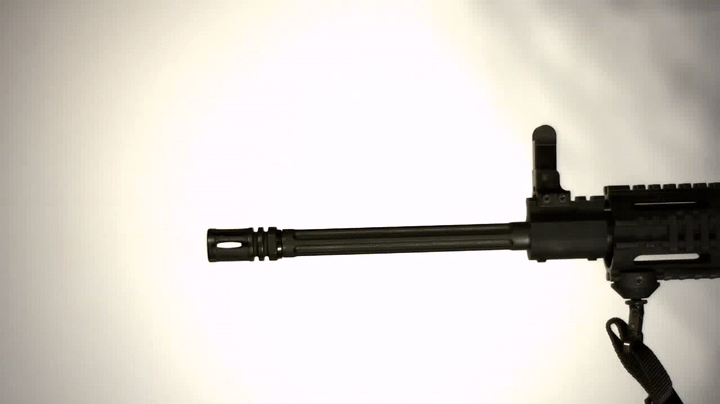
This barrel whipping isn’t something you’ll notice without a high-speed camera, but the more it happens, the less accurate your rounds will be, and the shorter the lifespan of your barrel as it heats up and wears faster.
This is a big part of the reason why stiffer barrels, like carbon fiber barrels and heavy barrels, are more accurate than thin, pencil barrels.
Of course, you can mimic the stiffening effects of one of these more expensive barrels by carefully adjusting the powder in your hand-loaded round. This allows you to minimize the amount of barrel “whip” or flex you get, and increase your accuracy, and barrel lifespan.
That’s some pretty technical and involved stuff though, so you might be happy with the basics.
Like matching the exact weight and type of bullet to your rifling and your task at hand. Say you have a .308 barrel with a 1:10” twist.
Do you know what bullet weights work best with that barrel? Because there’s one that will give you the optimum blend of a heavy, stable bullet that will impact plenty of force onto your target, and a bullet light enough to be fully stabilized for a long flight towards its target.
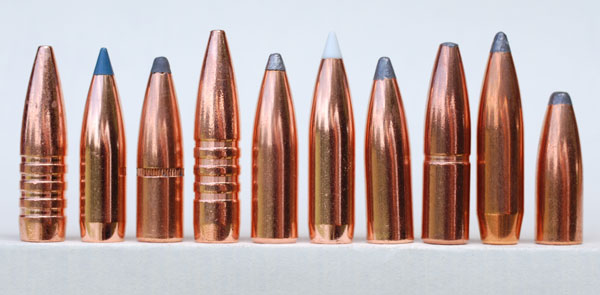
to your needs–including your bullet size.
Reloading will let you use the exact bullet that’s best for your needs.
You can also work up loads to different velocities, say a low-powered training load that won’t wear on your shoulder or on your wrists, and a full-power self-defense or hunting load that wrings all of the possible performance out of the round in question.
Either way, you can work up entire batches of ammo to your exact specifications, within safe limits of course.
You Save Money
While there is a high initial investment in some of the equipment and consumables, you will actually save money in the long run, especially if you can get things like a press and dies on craigslist, or from a friend no longer interested in reloading.
Now, with cheap ammo like say, 9mm FMJ, you’ll probably only really save 15% or so over what you can get in the store. When you factor in the cost of equipment, it’ll take you quite a while before you’re in the black on your investment if that’s all you’re reloading.
Where the savings really come in are with the more expensive calibers and fancy match ammo.
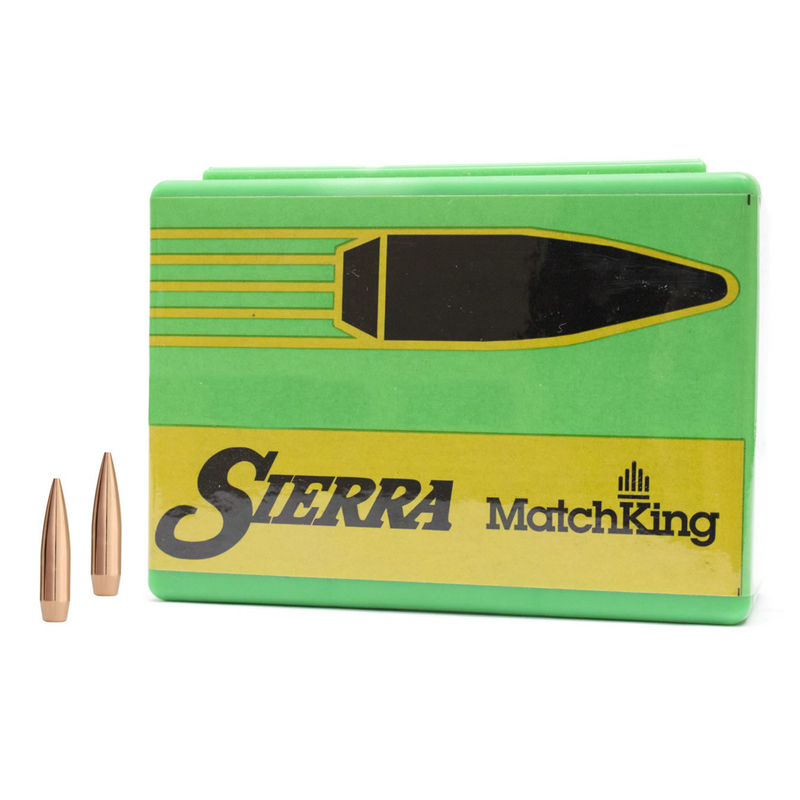
fraction of the cost of store-bought ammo.
An example: you can buy high-quality, 168gr .308 ammo loaded with Sierra MatchKing Bullets for about $0.90/round. You can buy the really expensive stuff that’s about as good as it can possibly get for $2.10/round.
You can reload something that’s not only as good as the expensive stuff but will be tuned to your specific rifle on the atomic level for about $0.70/round.
That kind of accuracy and performance is almost priceless, and it’s still cheaper than just buying good ammo off the shelf. And if you really shop around for deals, buy in bulk, and stockpile the components you need, you can cut that number down too.

you’ll also save a pretty penny when you do!
So, if you choose to reload, you’ll be saving money on ammo in the long run, if you stick with the habit, and you’ll certainly be able to shoot more for the same price you’d pay at the store for factory ammo, after your initial investment.
Finally, with places like California passing restrictions on online ammo sales, and with price gouging due to hoarding and the uncertain nature of our political world, ammo prices at the store may fluctuate wildly.
Anyone who remembers trying to buy .22 ammo during the middle part of the Obama years knows what we’re talking about. And that didn’t even have anything to do with the administration, just the fear of what the news thought they might do, and savvy (or sly) folks in the industry capitalizing on that fear.
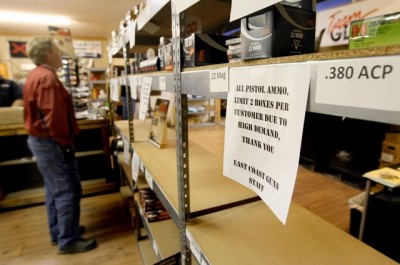
You can insulate yourself from all of that nonsense by simply making your own ammunition. Reloading components are rarely seriously impacted by this sort of thing, meaning that while your buddies might be waiting in line at the big stores to spend previously unthinkable amounts on ammo, you’ll be sitting in the garage laughing at them.
It’s Just Plain Fun!
If you are a DIY type of guy or gal who likes to tinker with stuff or work with your hands in general, reloading can be just plain fun. It’s a bit repetitive (you are just doing the same thing over and over until you have 10 or 100 or 1000 rounds made up after all), but there’s something viscerally satisfying about it.
You can get into an almost zen-like flow as you work too, and while you should always remain alert and pay attention to what you’re doing, it’s very easy to lose yourself in the work and churn out hundreds of rounds at a time.
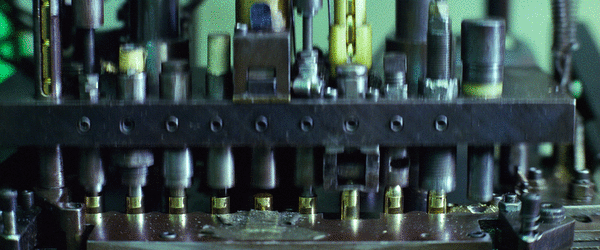
It’s only a chore if you look at it that way. It can actually be super relaxing and enjoyable, and if you have a pair of little hands and an inquiring young mind to help you, so much the better.
How Does it Work?
With the questions of “why” out of the way, let’s talk about the “how.”
Keep in mind, this is a rough overview, and we won’t be touching on every little part you need and which ones to buy. This is a very basic look at how reloading and handloading work, and a general idea of what you’ll need to get started.
Understanding the Parts of a Cartridge
First, the most basic information. A bullet cartridge is made up of four components: the casing, the primer, the powder, and the bullet itself. The firing pin or striker hits the primer that creates a small explosion, which in turn sets off the much larger explosion of the cartridge’s powder charge.
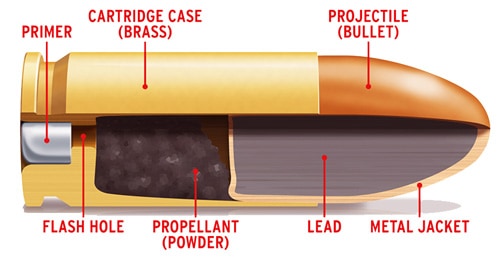
This turns the powder into a rapidly expanding gas that pushes the bullet out of the casing, into the barrel, down the barrel, and out the muzzle. While this happens the case is deformed to create a seal that pushes all (really most) of the expanding gases forward behind the bullet. This all happens literally faster than you can blink once the trigger is pulled.
The Reloading Process
Reloading is just doing all those things in reverse. You’re resizing the case to make sure it is exactly the right dimensions, putting a new primer in the case, filling it with powder, and the seating and possibly crimping a bullet into the neck of the casing.
Let’s talk about what each of these processes entails individually.
Prepping Cases
If you have newly manufactured brass that’s never been fired, you still need to make sure each one is properly sized, but it makes this step a lot easier, but more expensive.
For previously-fired brass, there are a couple of things you need to do.
First, you’ll want to deprime your cases. Sure you can do it later, but then you’re just going to have to clean the area around the primer manually, or with a special tool. Depriming the cases is relatively easy, and doing it first saves you some hassle later.
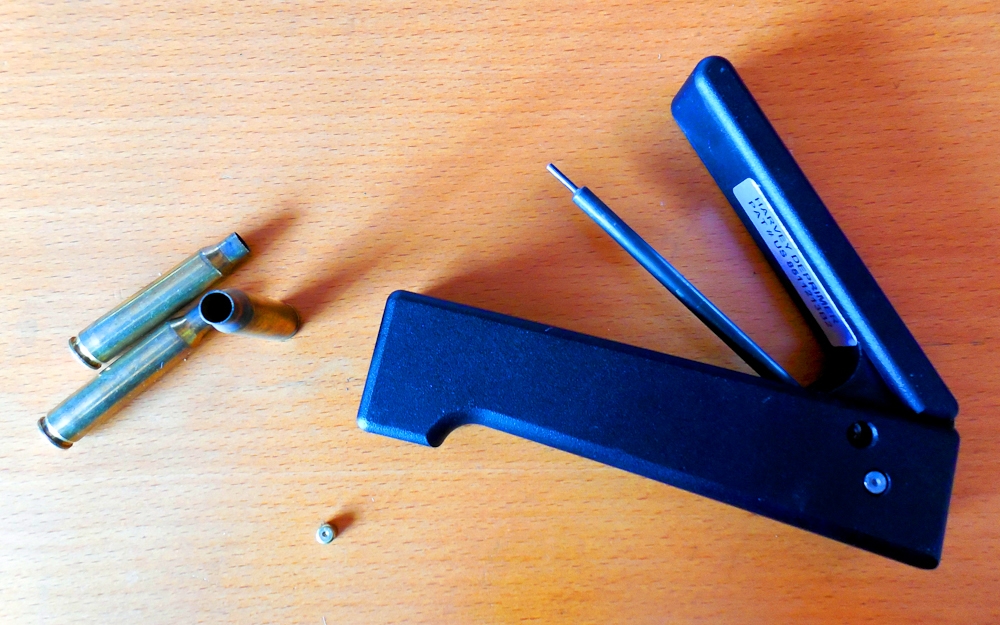
Next, you have to clean the cases. Guns are dirty, particularly near where the explosions happen, and there’s nothing closer than the casing which actually contains most of the things that make the gun dirty.
Cleaning the cases involves a brass tumbler, which is a large rotating cylinder that you pour fired cases into, and then you add a cleaning medium such as crushed walnut shells or ground up corn cobs, or other synthetic mediums, and a polishing agent. This then rotates for a few hours and cleans your brass.
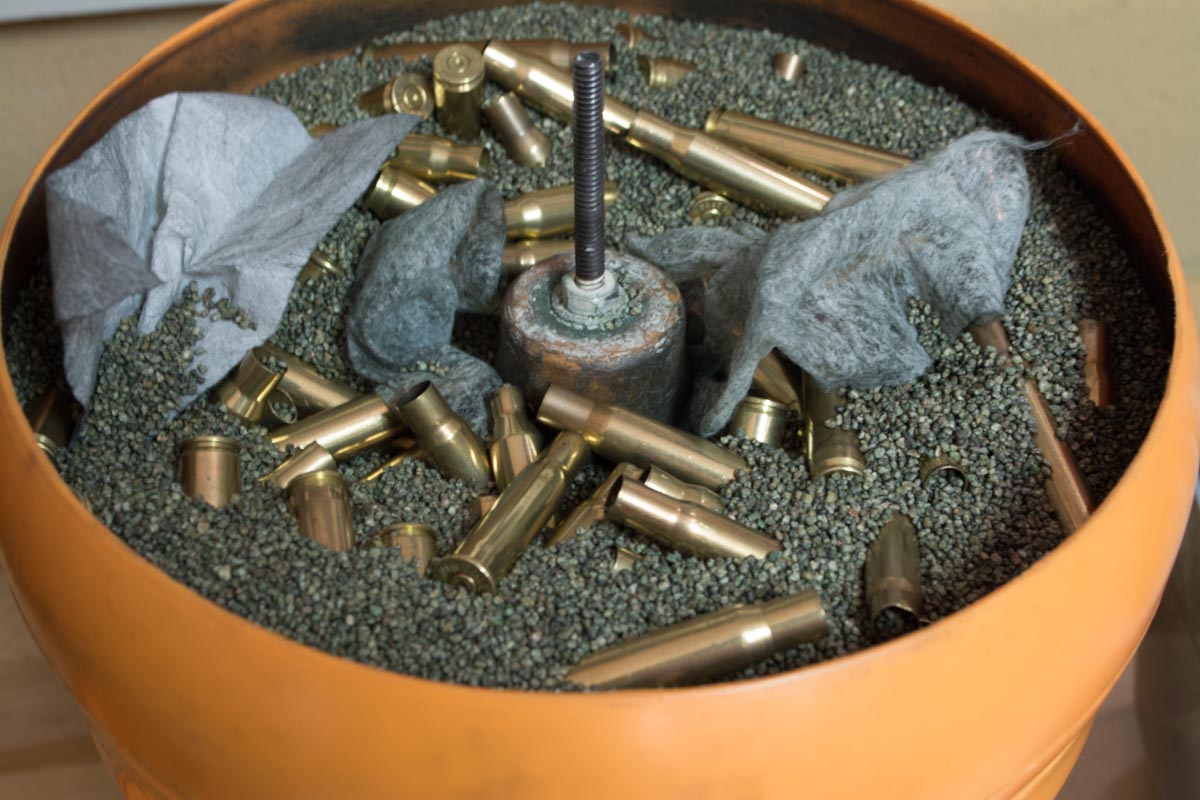
A warning: it is very, very loud, and can have issues with lead contamination, so you’ll want to do it outside, or at least in a very well-ventilated area.
Now that the case is deprimed and clean, you have to make sure everything is in the proper spec. This typically means using a reamer tool on the primer pocket to make sure its the correct size and free of burrs, and then using a resizing die in your reloading press to compress the fired brass back into its pre-fired shape.
More or less anyway. You may still need to trim the case to length, but there are a number of devices that will do that, and it may not even be necessary depending on your caliber. If you do have to trim the case, make sure you deburr and chamfer the case mouth to allow proper bullet seating.
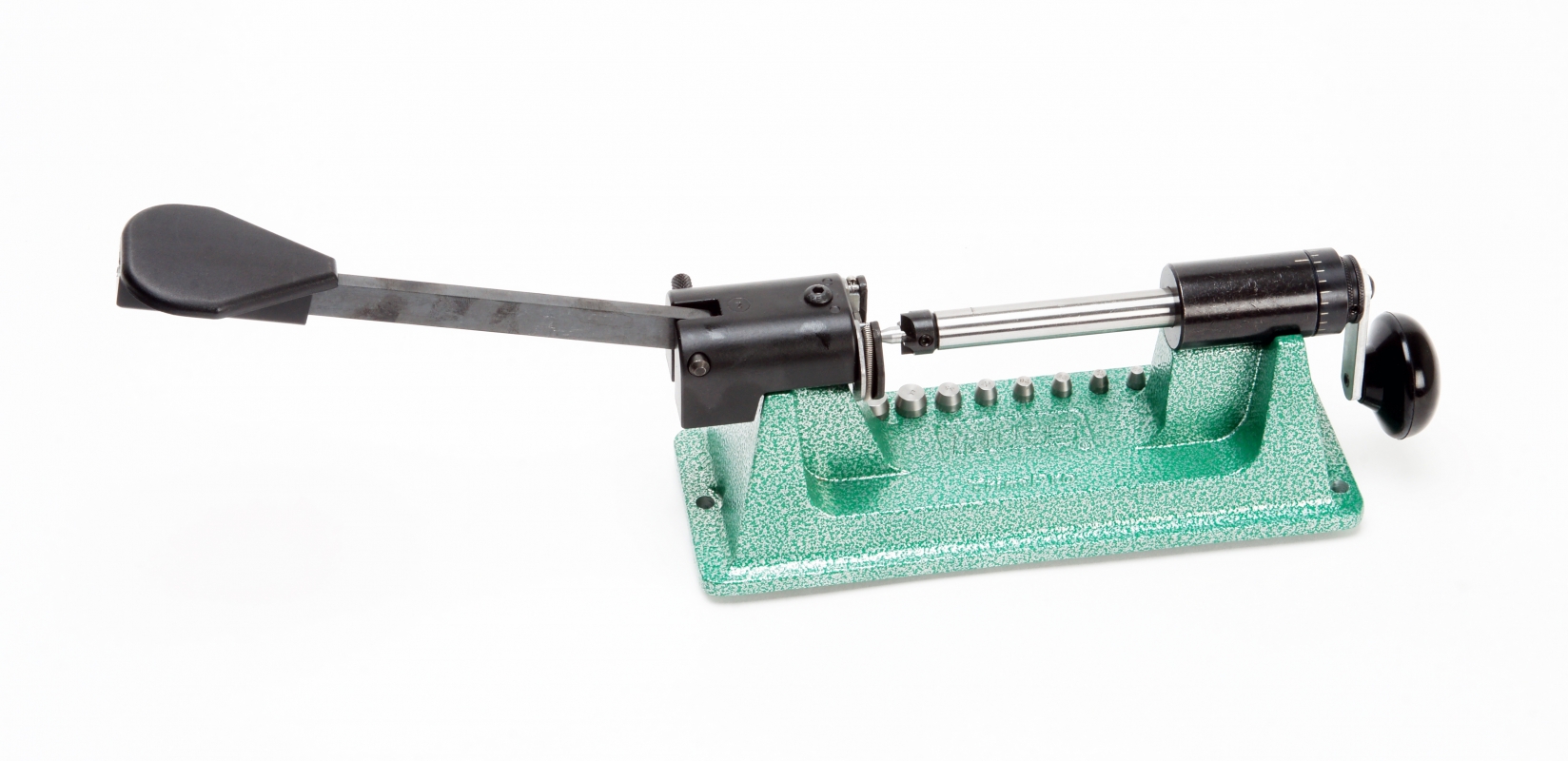
Again, there are tools for this. See what we mean about a high initial investment? Don’t worry, most of these tools are relatively cheap individually, and work for multiple calibers (except for the sizing dies).
A reloading manual will tell you when your case is the exact right size and will let you know what the acceptable tolerances are, as well as where to start with powder.
Now the case is prepped, cleaned, resized, and ready for priming.
Priming Cases
There are plenty of priming tools out there, and some of them work when you resize the case, so if you have one of those, you’re good to go. Basically, all these tools do is press the primer into the primer pocket, and seat it firmly.
Pretty easy.
Measuring and Pouring the Powder
This is where it gets complicated again. There are, literally, thousands of powders out there, some for rifles, some for pistols, some for shotguns, some for black powder, different grain sizes, different makeups, different… you get the idea.
The basics will be in your trusty reloading manual, which will tell you which powders you can use.
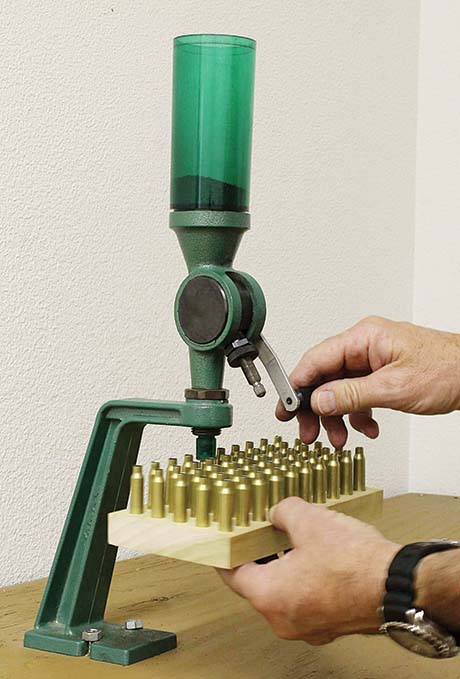
Actually measuring and pouring the powder is accomplished either with a stand-alone powder measure or with one that’s part of your reloading press–which we’ll talk about in a minute. These powder measures will dispense a certain, pre-calibrated amount of powder allowing you to fill the reservoir, and then dispense powder charges of the exact size you need until its time to fill the reservoir again.
Seating the Bullet
The final step is seating the bullet in the case. There are a number of different things you may have to do here depending on the caliber, such as flaring and crimping the case, but the basic process is pulling a lever that causes your press to… well, press your bullet into its case.
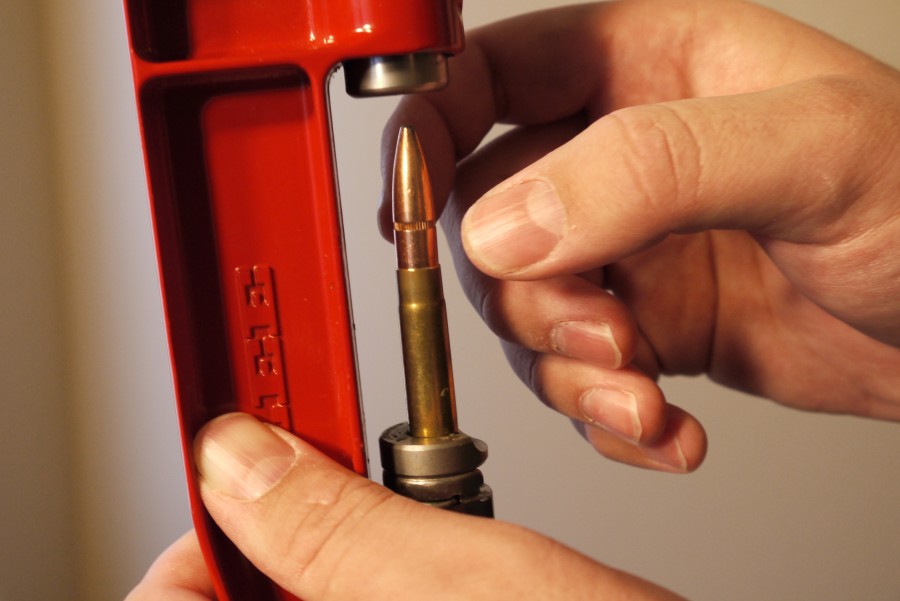
bullets into your casings.
And now, your brand new, hand loaded cartridge is ready to be fired!
Types of Presses
There are three types of reloading presses that do all these things. They go from cheap, <$100 single stage presses that will get the job done, but very, very slowly, to $400+ progressive presses that will let you churn out 1000 rounds an hour if you really know what you’re doing.
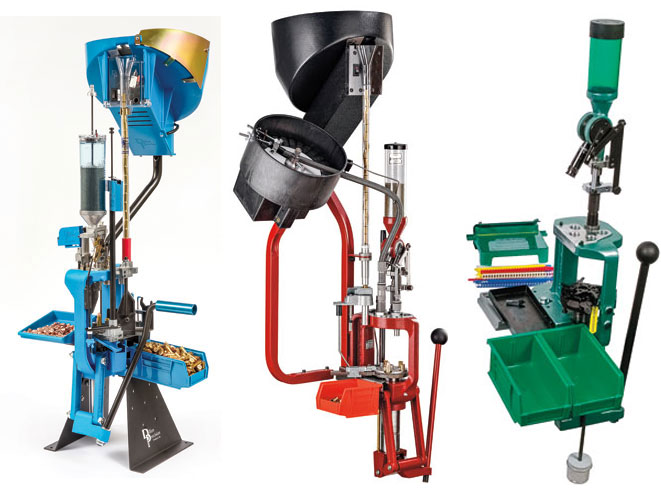
A single stage press may be good for starting out, but for just a little bit more you can get a turret press that will let you do all the operations of reloading a case without switching dies or swapping tools. This is what we recommend for someone starting out, like the Lee Turret Press Kit.
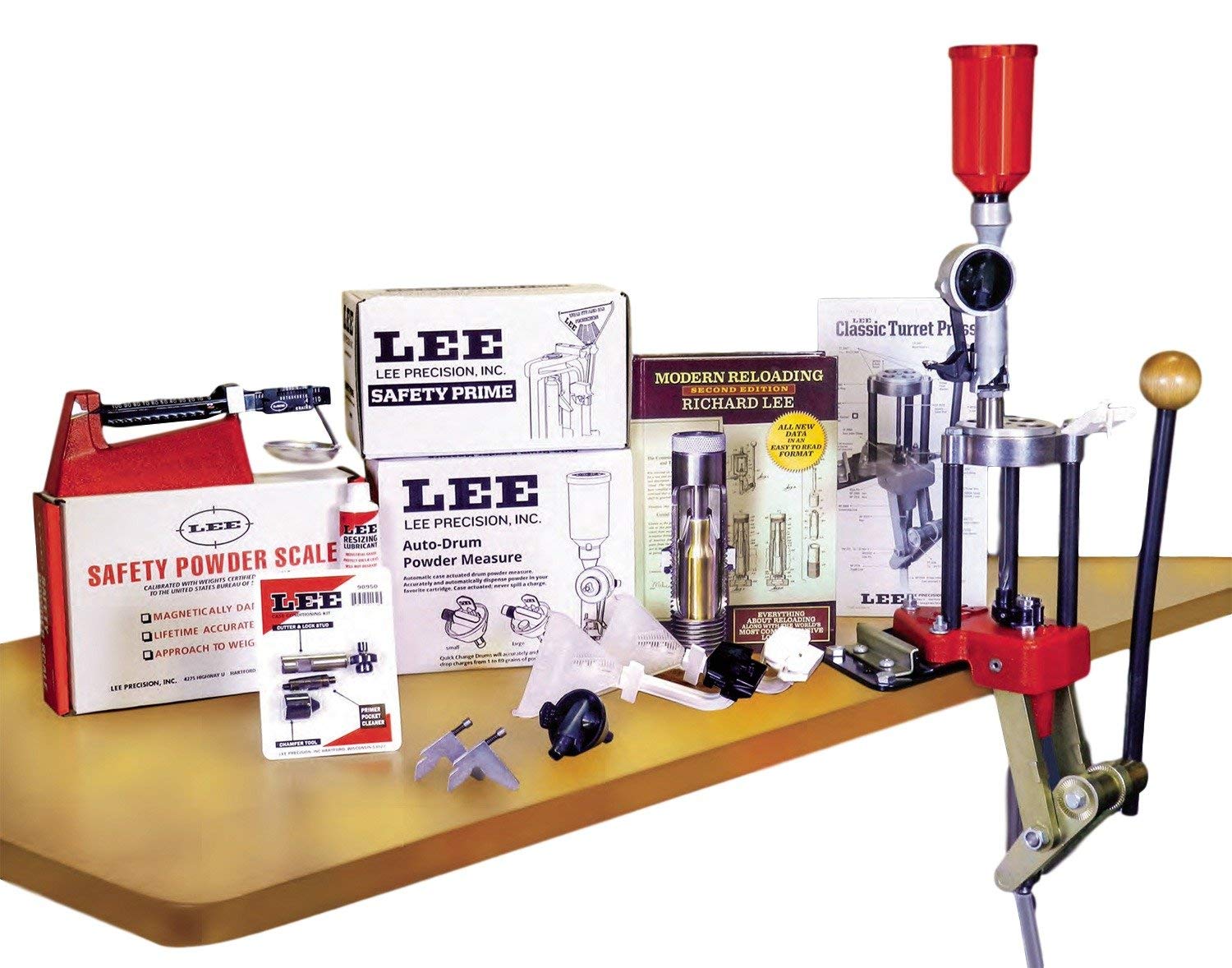
Lee Precision Turret Press Kit
Pros
- Contains nearly everything you need to get started with reloading
- Affordable kit
Cons
- You will need to purchase individual caliber dies separately
Final Thoughts
If you’re thinking about getting into reloading, there’s no better time than right now. It’s a fun and rewarding way to grow in your shooting hobby, and save money at the same time. It may seem daunting at first, but it’s actually fairly simple, and can even be fun in and of itself.
Thinking about getting into reloading? Want to know more? Got some specific questions we didn’t cover? Let us know in the comments below! Learn more about different bullet calibers with our complete guide to bullet calibers!


